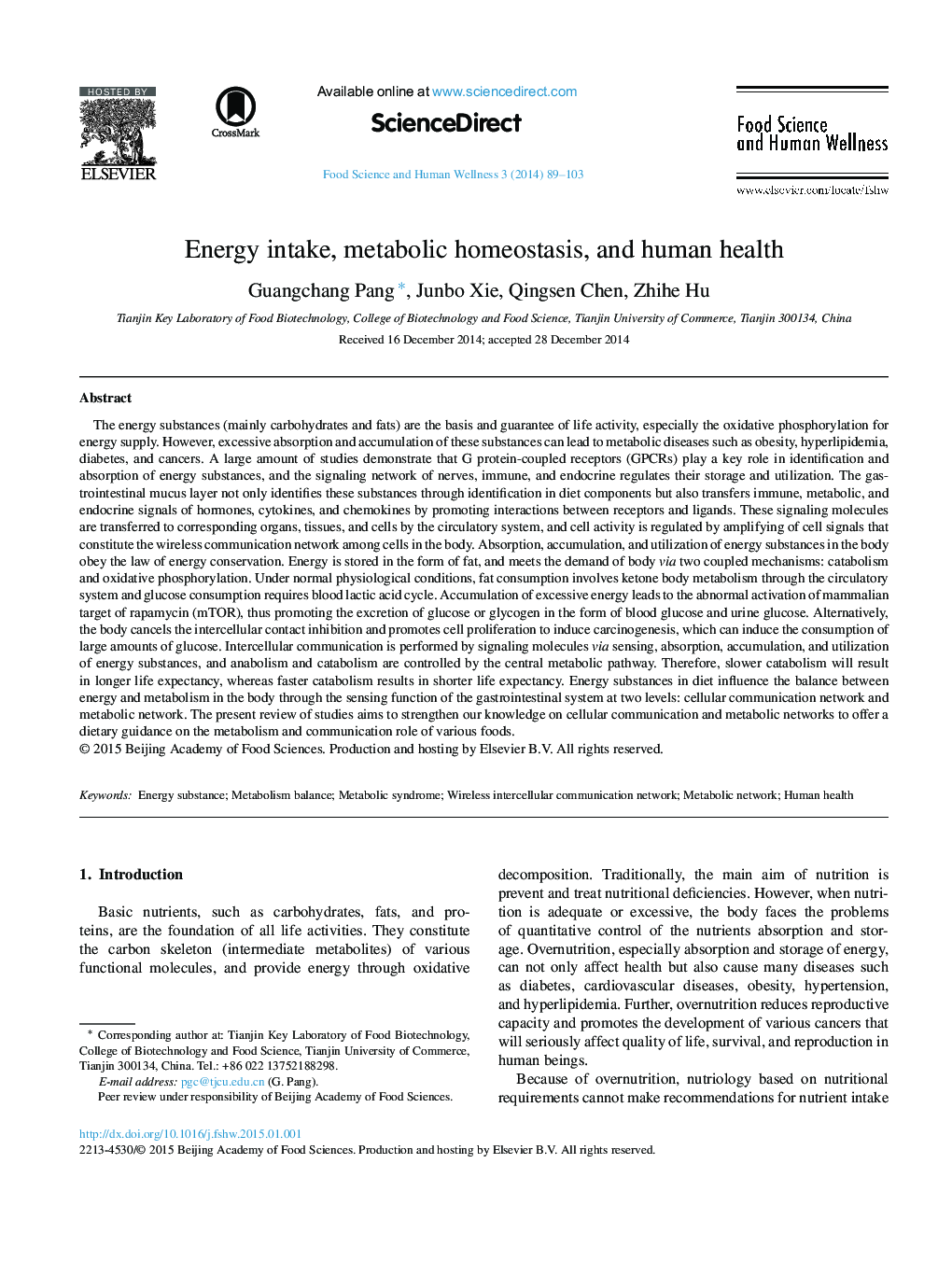| Article ID | Journal | Published Year | Pages | File Type |
|---|---|---|---|---|
| 2688448 | Food Science and Human Wellness | 2014 | 15 Pages |
The energy substances (mainly carbohydrates and fats) are the basis and guarantee of life activity, especially the oxidative phosphorylation for energy supply. However, excessive absorption and accumulation of these substances can lead to metabolic diseases such as obesity, hyperlipidemia, diabetes, and cancers. A large amount of studies demonstrate that G protein-coupled receptors (GPCRs) play a key role in identification and absorption of energy substances, and the signaling network of nerves, immune, and endocrine regulates their storage and utilization. The gastrointestinal mucus layer not only identifies these substances through identification in diet components but also transfers immune, metabolic, and endocrine signals of hormones, cytokines, and chemokines by promoting interactions between receptors and ligands. These signaling molecules are transferred to corresponding organs, tissues, and cells by the circulatory system, and cell activity is regulated by amplifying of cell signals that constitute the wireless communication network among cells in the body. Absorption, accumulation, and utilization of energy substances in the body obey the law of energy conservation. Energy is stored in the form of fat, and meets the demand of body via two coupled mechanisms: catabolism and oxidative phosphorylation. Under normal physiological conditions, fat consumption involves ketone body metabolism through the circulatory system and glucose consumption requires blood lactic acid cycle. Accumulation of excessive energy leads to the abnormal activation of mammalian target of rapamycin (mTOR), thus promoting the excretion of glucose or glycogen in the form of blood glucose and urine glucose. Alternatively, the body cancels the intercellular contact inhibition and promotes cell proliferation to induce carcinogenesis, which can induce the consumption of large amounts of glucose. Intercellular communication is performed by signaling molecules via sensing, absorption, accumulation, and utilization of energy substances, and anabolism and catabolism are controlled by the central metabolic pathway. Therefore, slower catabolism will result in longer life expectancy, whereas faster catabolism results in shorter life expectancy. Energy substances in diet influence the balance between energy and metabolism in the body through the sensing function of the gastrointestinal system at two levels: cellular communication network and metabolic network. The present review of studies aims to strengthen our knowledge on cellular communication and metabolic networks to offer a dietary guidance on the metabolism and communication role of various foods.
